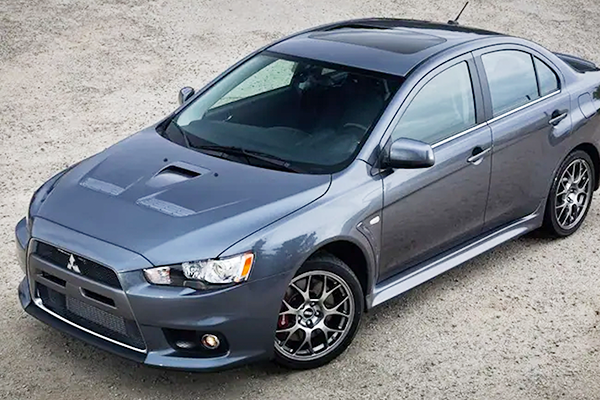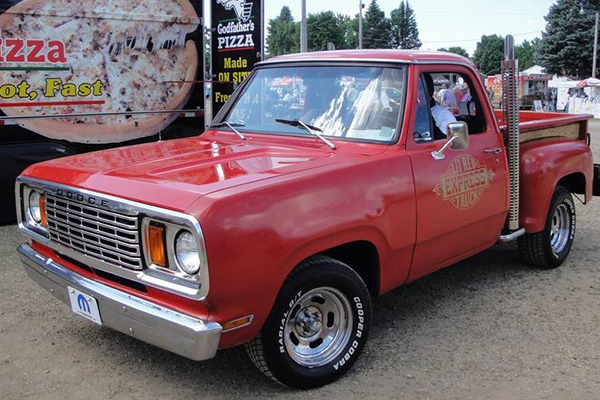From timeless icons to everyday essentials, Crucial Cars examines the vehicles we can’t live without. For this installment, we have some fun peeking under the bonnet of the iconic MINI Cooper and looking at how it’s evolved over the decades.
As the Mini Cooper approaches its 60th anniversary in 2019, its creator – Sir Alex Issigonis – would be equally proud and astonished at the iconic model’s longevity and steadily increasing popularity, and perhaps even a little taken aback that some of today’s MINIs aren’t so mini after all.

1964 Austin Mini Cooper
First Gen: 1959-1967
The first Mini Mark I rolled off the assembly line in 1959 and went on to become the best-selling British car in history with more than five million Mini’s produced until 2000. That was the year that production under the English Rover Group ended after BMW sold the Rover Group – which it had acquired in 1994 – but retained the MINI brand.
The Mini was created as a response to a fuel shortage and the need for more efficient city cars. Developed as a two-door, four-cylinder engine by BMC, the Mini was tied to their other brands including the Morris Minor and Austin.
The 1960s saw a big boom for the Mini thanks to purchases by film and music stars, and it gained it's own identity. Until 1962, the cars appeared in North America and France as the Austin 850 and Morris 850, and in Denmark as the Austin Partner (until 1964) and Morris Mascot (until 1981). The Morris name Mini (Mini-Minor) was first used for Austin's version by BMC in 1961 when the Austin Seven was rebranded as the Austin Mini.
In 1964, the suspension of the cars was replaced by another Moulton design, the hydrolastic system. The new suspension gave a softer ride, but it also increased weight and production cost. In 1971, the original rubber suspension reappeared and was retained for the remaining life of the Mini.
Fueling the 1960’s Mini craze was its innovative design – despite being small, it offered plenty of interior space for passengers and luggage. That early design included a transverse engine, front-wheel drive, compact dimensions, and a unibody that reduced weight and increased interior space.
Starting in 1960, the Mini came in a variety of models including:
- Wolesely Hornet and Riley Elf (1961-1969)
- Morris Mini Traveller and Austin Mini Countryman (1960–1969)
- Mini Van (1960–1983)
- Mini Moke (1964–1989)
- Mini Pick-up (1961–1983)
- Morris Mini K (March 1969 – August 1971, Australia only)
The name's Cooper...Mini Cooper
The Cooper name became synonymous with Mini in 1961 when John Cooper, owner of the Cooper Car Company and friend of Sir Alex Issigonis, added muscle to the Mini by giving it a larger engine and other enhancements. Cooper was already making a name for his company by leading the revolution toward building and winning with rear-engine race cars. His success carried over to the Mini when his versions won the 1964, ’65, and ’67 Monte Carlo Rallies, with a four-year sweep being thwarted only by the Mini Cooper’s disqualification in the ’66 Rally after taking the top three spots.
In 1961 the 848 cc (51.7 cu in) engine from the Morris Mini-Minor was given a longer stroke to increase capacity to 997 cubic centimetres (60.8 cu in) increasing power from 34 to 55 bhp (25 to 41 kW). The car featured a racing-tuned engine, twin SU carburettors, a closer-ratio gearbox and front disc brakes, uncommon at the time in a small car. One thousand units of this version were commissioned by management, intended for and designed to meet the homologation rules of Group 2 rally racing. The 997 cc engine was replaced by a shorter stroke 998 cc unit in 1964. In 1962, Rhodesian John Love became the first non-British racing driver to win the British Saloon Car Championship driving a Mini Cooper.
A more powerful Mini Cooper, dubbed the "S", was developed in tandem and released in 1963. Featuring a 1071 cc engine with a 70.61 mm bore and nitrided steel crankshaft and strengthened bottom end to allow further tuning; and larger servo-assisted disc brakes, 4,030 Cooper S cars were produced and sold until the model was updated in August 1964. These models continued in production until 1971.

1969 Mini Cooper
Mark II Mini: 1967-1970
The Mark II Mini was introduced at the 1967 British Motor Show and featured a redesigned grille, larger rear window, and a variety of cosmetic changes. By 1969, over 2 million Mini had been sold around the world. Pickup and station wagon versions were introduced and all were incredibly durable – whether rallying or doing the daily errands. Owners knew they could depend on their Mini to get the job done. And inspire smiles the entire time. Mini’s popularity was helped further by the car’s appearance in chase scenes in the 1969 hit film “The Italian Job.”
Third generation overlap
Generation three Mini began with the 1969-70 model and the most noticeable change from the previous generation being larger doors with concealed hinges and larger windows that wind up and down, instead of sliding left or ride. The suspension reverted from Hydrolastic to rubber cones as a cost-saving measure.
Production at the Cowley plant was ended, and the simple name Mini completely replaced the separate Austin and Morris brands. In April 1974 a heater became standard equipment on the entry level Mini 850 as well, having by now already been included in the standard specification of the other models for some time.
In the late 1970s, the Mini was still popular in Britain, but appeared increasingly outdated in the face of newer and more practical rivals. Since the late 1960s, plans had been in place for a newer and more practical supermini to replace it, though the Mini was still the only car of this size built by British Leyland for the home market.

1976 Austin Mini Cooper
Mark IV
The Mark IV Mini, 1976-1983, had a front rubber mounted subframe with single tower bolts and the rear frame had some larger bushings introduced. Twin stalk indicators were introduced with larger foot pedals. From 1977 onwards, the rear indicator lamps had the reverse lights incorporated in them.
In 1978, Mini was one of the cars made available to disabled motorists under the Motability scheme, a law in the United Kingdom intended to enable disabled people, their families, and their caretakers to lease a new car, scooter, or powered wheelchair, using their government-funded mobility allowance.
By 1980, the Mini was losing steam in the market thanks to competition from a new wave of modern superminis like the Austin Mini-Metro, Ford Fiesta, Renault 5 and Volkswagen Polo. Although the Mini continued to be produced after the Metro's launch, production volumes were reduced.
1981 was the original Mini's last year in the top ten of Britain's top selling cars, as it came ninth and the Metro was fifth. The arrival of the Metro also saw production of the larger Allegro pruned back before it was finally discontinued in 1982. In 1988, Austin Rover decided to keep the Mini in production for as long as it was viable to do so, putting an end to reports that it would be discontinued by 1991 - by which time the original Metro would also be replaced.
Mini Mark V through Mark VII
From 1984 to 1996, the Mini Cooper would go through three more variations. The Mark VII in '96 would be the final version. It featured twin point injection with front-mounted radiator, full-width dashboard replaced the original shelf, an added internal bonnet release, and introduction of airbag on driver's side.
The basic Mini was the 1.3i, the other model in the range being the Mini Cooper. The end of production in October 2000 not only signalled the end of original Mini production after 41 years, but also brought about the demise of the 1275cc engine which had powered the Mini and numerous other BL/BMC/ARG cars for more than 30 years.
Awards
Throughout the years, Mini continued to rack up the awards, including Autocar magazine’s Car of the Century in 1995, the Number One Classic Car of All Time by Classic & Sports Car magazine in 1996, European Car of the Century by the Global Automotive Elections Foundation in 1999, and 2003 North American Car of the Year, among others.

2017 Mini Cooper Countryman
Mini Cooper revised
Although the original production of the Mini was discontinued, the concept for a new line of Mini's was introduced at the Paris Auto Show in October of 1999. Since the Hardtop burst onto US roadways in 2002, the public’s appetite for MINI has grown along with the MINI lineup. The expanding family includes available ALL4 all-wheel drive, three models with more seating and four doors, spirited two-seaters, topless motoring – and a new era of sophisticated technology and high-end interiors.
Depending on which Mini you’re looking at today, it either looks much like its first ancestor, or only bears a faint resemblance to those early models. As Mini’s popularity grew, so too have the Mini models offered. Today, there are nine Mini models available.
- Hardtop Two-Door – bears the closest resemblance to the original Mini
- Hardtop Four-Door – a larger Mini with four doors and more space
- Countryman – the “Big Mini” features four doors, seating for five, and all-wheel drive
- Clubman – four doors, a split rear door, and the largest Mini available
- Convertible – looks like the original, minus the hard top
- Paceman – two-door hatch seats four and features all-wheel drive
- Coupe – powerful, sporty two-seater
- Roadster – similar to the Coupe, but more fun thanks to the soft top
- John Cooper Works – race-ready Minis that look like they could be a lot of fun, and get you in a lot of trouble
With a price tag just under $21,000, zero-to-60 stats that are 2.3 seconds faster than its predecessor thanks to a TwinPower turbo engine, tons of dashboard technology, and world-famous, go-kart like handling, today’s entry-level, two-or-four-door Mini’s all grown up, but still a serious toy for thrill-seeking drivers of all ages.








